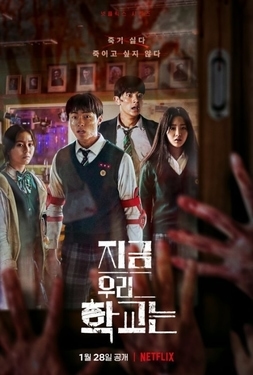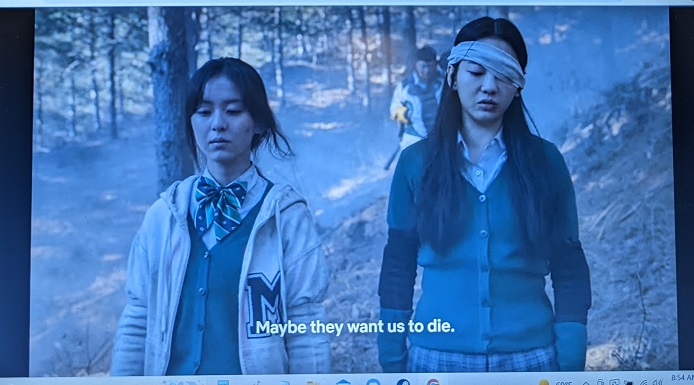Homelanders in Hell

We recently watched an excellent zombie horror TV series called All of Us Are Dead (one season so far available on Netflix). It’s set in a high school, so it’s also a coming of age show, with accompanying side stories about fitting in and surviving bullying and whether or not to reveal your feelings to your crush. Not to say too much, but you can probably guess from the title that things don’t go very well for most of the students.
One theme that runs through the show is the expectation that the kids have of being aided or rescued by adults as the zombie apocalypse rages through their school, but ultimately being disappointed. There are heroic adult characters in the show, as well as cowardly ones, but for the most part the high school students are left to their own devices and it’s up to them to save themselves. The fantastical circumstances don’t allow for many options.
This is common enough in zombie shows; they always end up as survival against all odds stories. But in the case of this show there is an overarching sense of cluelessness and irresponsibility coming out of the adult world, while it’s the kids who end up paying the price. In fact, the zombie virus origin itself is tied to a subplot involving both negligence and recklessness by adults.
It’s a depressing show, and watching it I couldn’t help but compare the fate of these fictional schoolchildren with those who in the real world have been victimized in their classrooms by horrific mass shootings. They too should have been protected, but were abandoned instead. It’s an unmistakable parallel which aligns the young characters in this show with the Homeland Generation in the United States. You might say that this show belongs to a new genre I will call “Homelanders in Hell.”
What do I mean, “the Homeland Generation?” In terms of Strauss-Howe generational theory, this is the generation, born since 2005, currently in childhood and filling the halls of middle schools and high schools. By their age location in history, as children during a Crisis Era, their role is stay out of the way, protected by adults who are doing the hard work of managing multiple unfolding catastrophes.
Except, tragically, when adults fail them, overwhelmed as they are by the magnitude of the disaster. Then their role is to be mourned in death, and in death to be held up as an inspiration for adults to find the courage and strength to do better.

4 thoughts on “Homelanders in Hell”
Great description of the dilemma facing the Homeland Generation.
How will Millennials fit into the real world mix to become the Hero Generation archetype ?
Some have been quite heroic, like the parents at Uvalde rushing in to rescue their kids while the cops stood around waiting for orders.
As I said on FB, Artist children surrounded by a world that’s a danger to them and their doe-eyed innocence is the pinnacle of pro-kid propaganda. It’s meant to inspire the adult Heroes and Nomads to respond and protect them as much as they can from the horrors that threaten from all sides. Whether that is by having innocent Snow White run through a nightmare inducing forest of eyes, claws, and scares, or children unable to navigate a Zombie Apocalypse.
Compare and Contrast with the teen Netflix series Daybreakers which features American teenagers of a late Millennial persuasion easily navigate a Zombie Apocalypse where all the adults are Zombies, and the kids create their own societies based on outdated stereotypes of high school cliques and manage to survive and thrive in the apocalypse by banding together. Same kind of scenario, far different story.
Great observation, Chas. We watched a couple of episodes of Daybreakers, but didn’t get pulled in the way we did for All of Us Are Dead. From what I recall it was much lighter in style, slapstick comedy even; a different subgenre of the Zombie Apocalypse show.